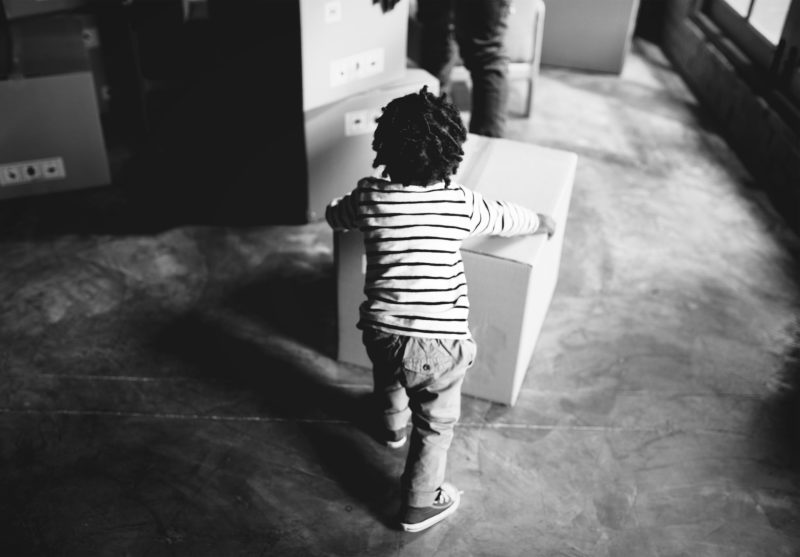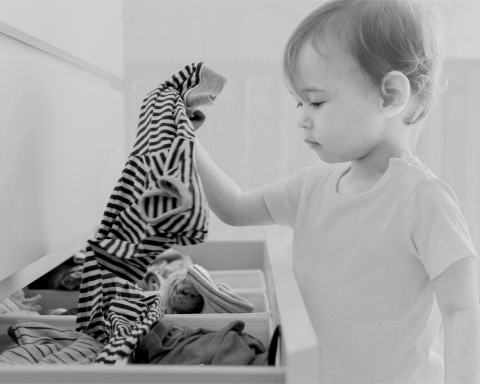Kids’ room organization is one of the most important things that parents must do to provide a safe and comfortable space for their little ones at home. When arranging a special room for children, several elements need to be considered to meet children’s basic needs, such as enabling movement, providing adult support, helping them to build their self-identity, and providing freedom for children to express themselves.
Children’s cognitive and emotional development is greatly influenced by the surrounding environment, making it possible for parents to periodically modify the room to suit the child’s age. Because children have different needs based on their age, therefore, this article will invite readers to understand more deeply the tips for organizing a special room for children to suit their age and needs.
Organized kids’ room benefits
Creating a home environment by showing support and affection is a form of parental love. Apart from supporting children’s emotional and cognitive development, several other benefits can be obtained if parents are willing to take the time to organize a special room for their children.
Providing learning spaces at home
Some people think that the function of a child’s room at home is only as a bedroom. However, in reality, arranging children’s rooms also aims to provide a learning space for them at home. This can also be supported by the presence of parents as the “first teachers” for children at home who have an important role in providing learning spaces in the form of play for children.
A study shows that the arrangement of the physical environment at home can have a positive or negative impact on children’s educational performance in elementary school. Children can get positive results to optimize their developmental milestones if the house where they live has a special space that allows them to access basic learning materials, such as toys and space to support their motor movements. However, children can’t reach their developmental milestones if parents do not dedicate a special room for them to study or because of limited access to basic learning materials.
Creating a safe space for children
Children are individuals with high curiosity. Their curiosity often encourages them to interact with any object around them — even objects that could endanger their safety, such as sharp objects and hazardous chemicals.
Therefore, it is important for parents to pay attention to the objects around their children so as not to injure them. This includes organizing items to be neatly placed to avoid the risk of children falling due to scattered items. Parental involvement in keeping dangerous items away from children’s rooms is very important in ensuring children’s safety at home.
Setting up boundaries for children
The need for privacy must be developed from an early age so that children slowly understand which things they can solely access. Creating a special room in the house for children will slowly support them in building self-boundaries.
Just like adults, children will begin to understand feelings of shame and the need for privacy as they get older, for example, when they want to change clothes or do other private activities.
If your home is too small to give your children their own room, you can divide common areas with cabinets, grids, cupboards, or temporary dividers. This will give them a sense of privacy and security.
Leading kids to organize their own rooms and belongings
Providing furniture such as cupboards and shelves in the children’s room can keep the room neat and orderly. When children are still babies, the storage area will play a big role in storing children’s clothes. Then, when children enter early school age, the storage area will play a role in storing toys and basic learning materials.
Apart from playing, children also learn through the process of observation. When parents provide a special room for their children and organize it regularly, over time, the children will imitate what their parents do. Parents can also invite their children to be directly involved in organizing their belongings so they can later do it independently without their parent’s help.
Age-appropriate organization ideas
Sociologists, psychologists, and environmental experts believe that children’s emotional and cognitive development is greatly influenced by the circumstances of their surrounding environment, including the design and arrangement of rooms. Therefore, it is important to organize the room according to the child’s age because each stage of a child’s development has different needs.
Newborn (0 – 3 months)
To prevent newborn babies from falling or being accidentally smothered by their parents, it is recommended to provide them with a crib to sleep in, even if they are sleeping in the parents’ bedroom. The crib should have soft textured mats, pillows, and blankets to make the baby comfortable. In addition to increasing safety, adding cushions to the floor surface near the crib may be considered. This prevents the baby from hitting the floor directly if they fall out of the crib.
Parents can also install a baby monitor on the edge of the baby crib. This allows them to monitor their baby even though they are not in the same room or while doing other activities at home.
Babies at this age really like watching hanging items. Apart from that, they also really like objects with various striking colors. Therefore, try placing hanging dolls of various colors above the baby’s crib to attract attention and train their head movements. Apart from hanging dolls, parents can also give them squeezy toys to train their fine motor skills.
In addition, consider adding a changing area in the baby’s room so that parents don’t have to take the baby out of the room to change the diaper. The changing area can be shaped like a table with drawers to store the baby’s necessities. The changing area can be placed in the corner of the room, or if you have more budget, parents can add a special room in the baby’s room as a changing area.
Infant (3 – 12 months)
Because the number of children’s toys begins to increase at this age, providing space for storage also needs to be considered. Try using storage cubes and soft baskets as an affordable solution to prevent messy children’s rooms. Children will use their toys again, so it is better to store them in an easily accessible area than in a cupboard that is too high.
Almost the same as setting up a newborn’s room, parents also need to add tumbling mats or cushions on the surface of the child’s room floor. This is so that children do not directly hit the hard surface of the floor when learning to walk or climb from their crib — considering that they have started to be able to climb. Make sure to always keep tumbling mats and cushions clean to protect children from growing bacteria.
Toddler (1 – 3 years old)
Because at this age children can already hold and use crayons and pencils, it is important to provide tables and chairs of the appropriate height to support their body posture when doing drawing activities or other games that require tables and chairs. The recommended table height for this age is approximately 14″ – 16″, while the recommended chair height is 7″ – 8″.
Considering that children will experience rapid physical growth, consider changing their bed from a crib to a toddler’s bed. Choose a bed that can be used long-term so you don’t have to replace it too often. Also, choose a bed with an appropriate height so the child can use it comfortably.
Starting at this age, parents should start involving their children in organizing their own things. Apart from training children’s independence, this also aims to ensure that children can keep their room and belongings neatly organized without waiting for their parents to be around them. Consider using low shelves as a place to store items so they are easier to reach for children.
Preschooler (3 – 5 years old)
Starting at this age, children need higher chairs and tables to support drawing and playing activities. Children at this age need a table around 15″ – 18″ high. Meanwhile, it is recommended to use chairs with a height of around 8″ – 10″.
If a toddler bed is still capable of supporting a child at this age, then the bed does not need to be replaced. However, if the child feels that his movements are limited, the bed must be replaced immediately to support the child’s body posture.
School-age kids (6 years and above)
Children aged 6 years and over are generally much more independent in carrying out their activities. If parents have involved their children in the activities of organizing rooms and belongings since the age of 12 months, then when they reach the age of 6 years, the child will be able to tidy up the room with his own belongings. Children’s motor skills are also more advanced, so they no longer need parental assistance in carrying out basic motor activities, such as grabbing objects.
At school age, generally, children’s belongings are dominated by textbooks from school or objects related to homework. So, the key to keeping your child’s room organized is to utilize the available space to provide a more complex storage area than just a toy box. To keep books and other items from scattering, you can use a bookshelf or study table equipped with drawers. Apart from that, you can build a walk-in closet or built-in closet for a larger storage area.
In conclusion
Organizing a kid’s room is important for their emotional and cognitive development, even though it can be tiring and requires a lot of consideration. It is not a one-time task but an ongoing activity, as your child’s needs change with each stage of development.
If you would like to see more resources on kids room organization, check out the Home Organization Science Labs. The lab uses the research of the Institute for Life Management Science to produce courses, certifications, podcasts, videos, and other tools. Visit the Home Organization Science Labs today.
Photo by rawpixel.com on Freepik



